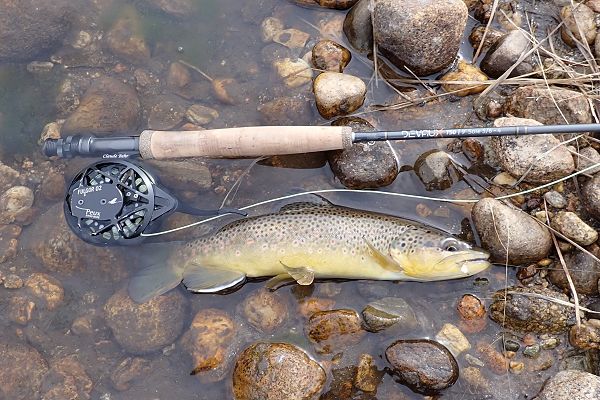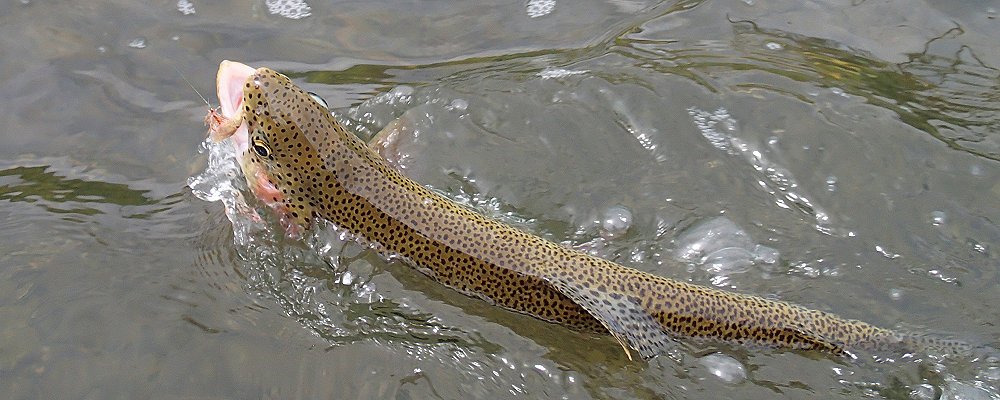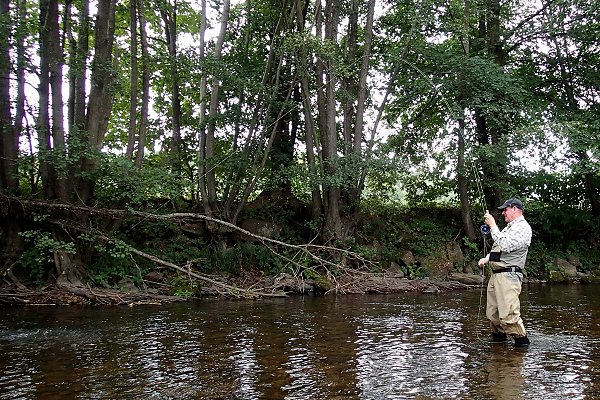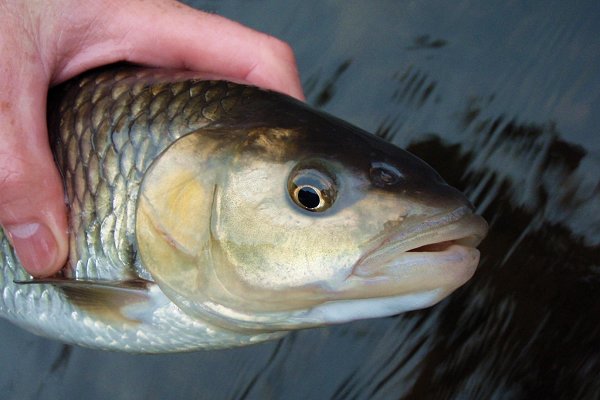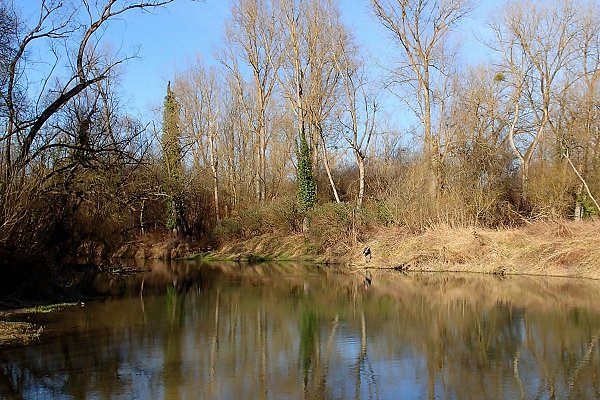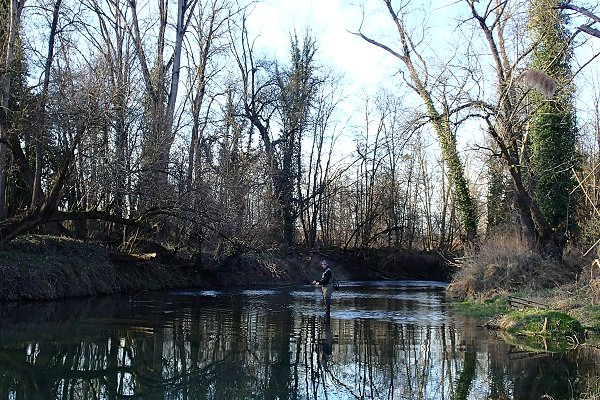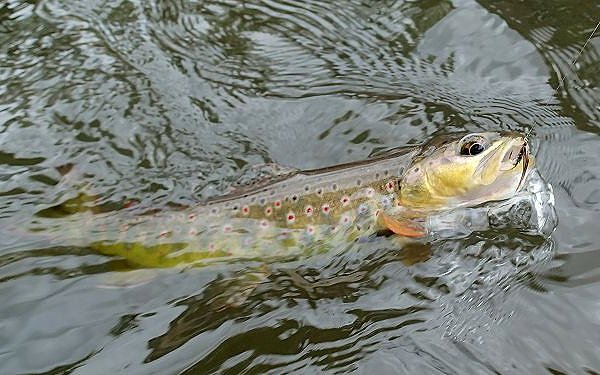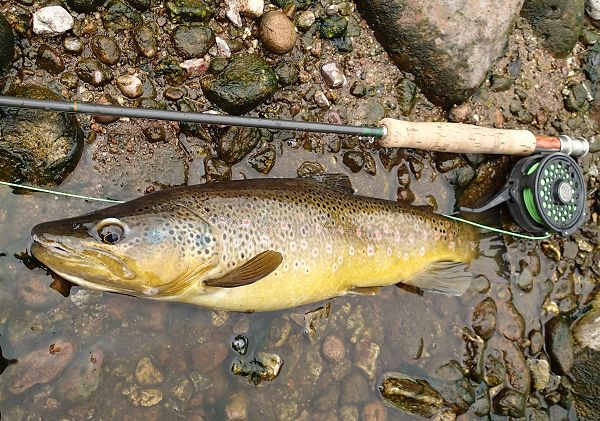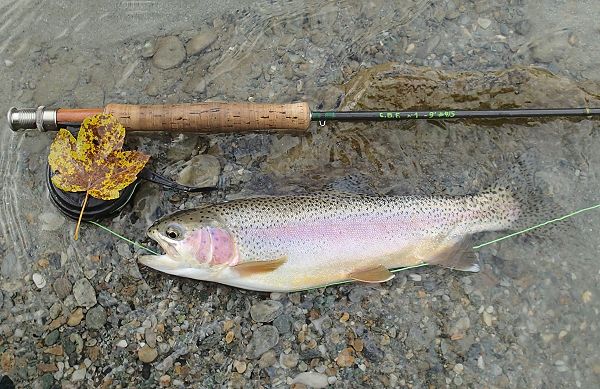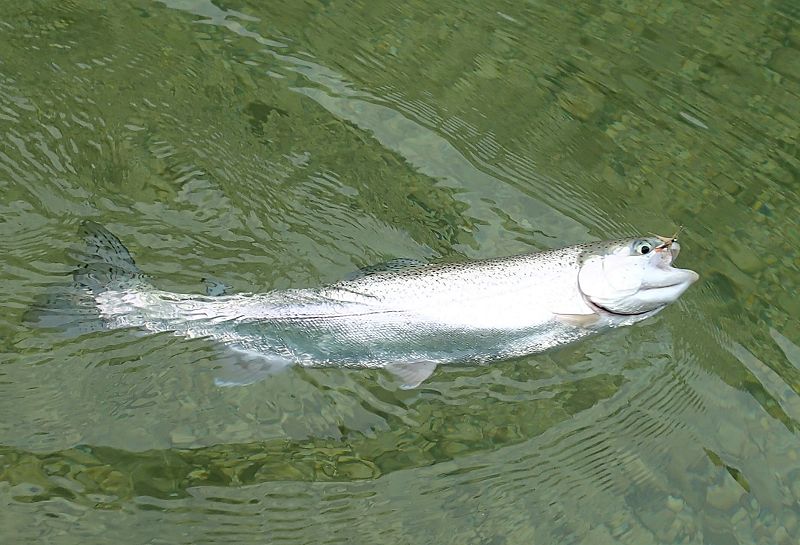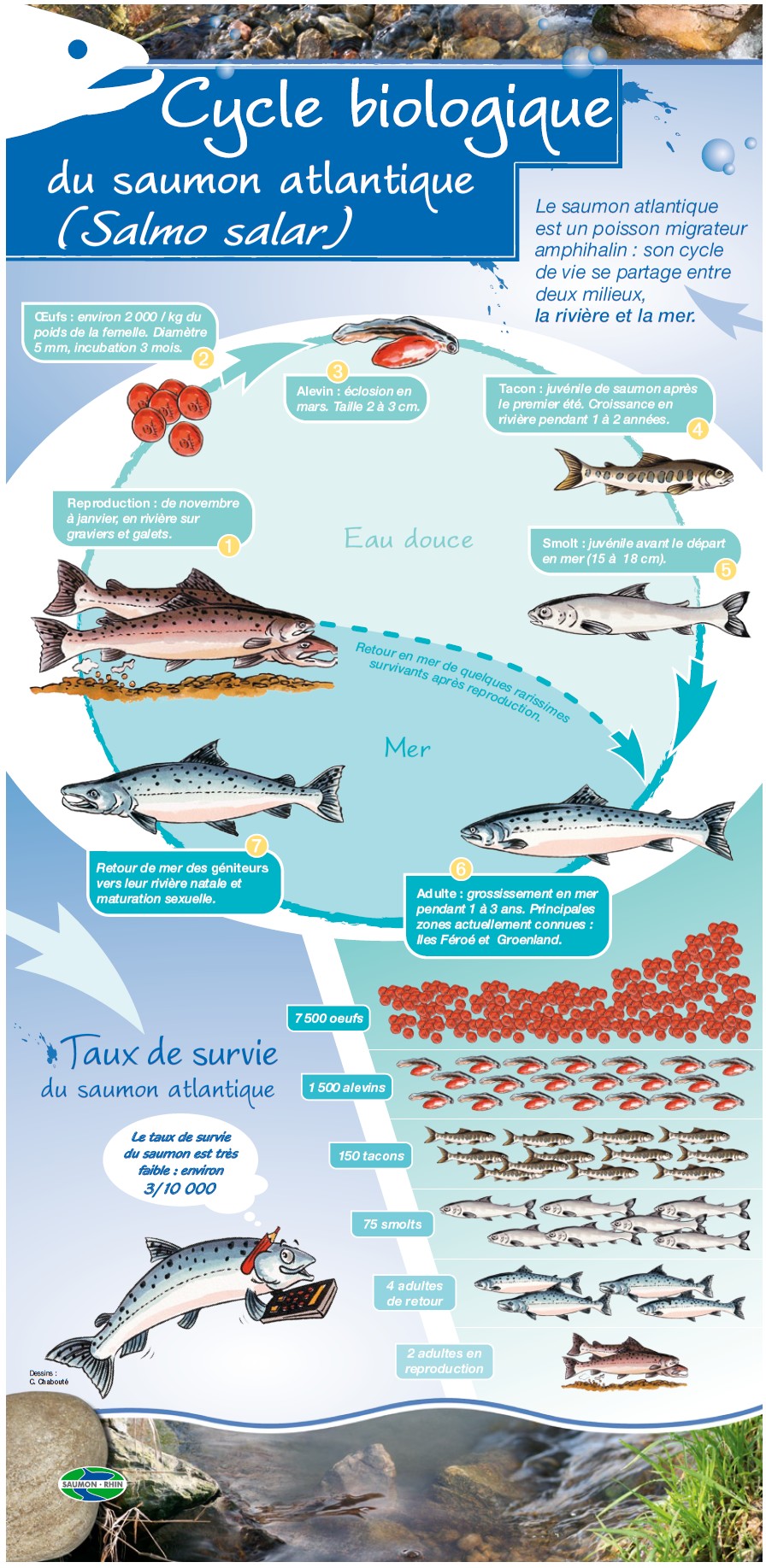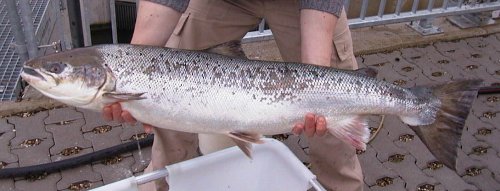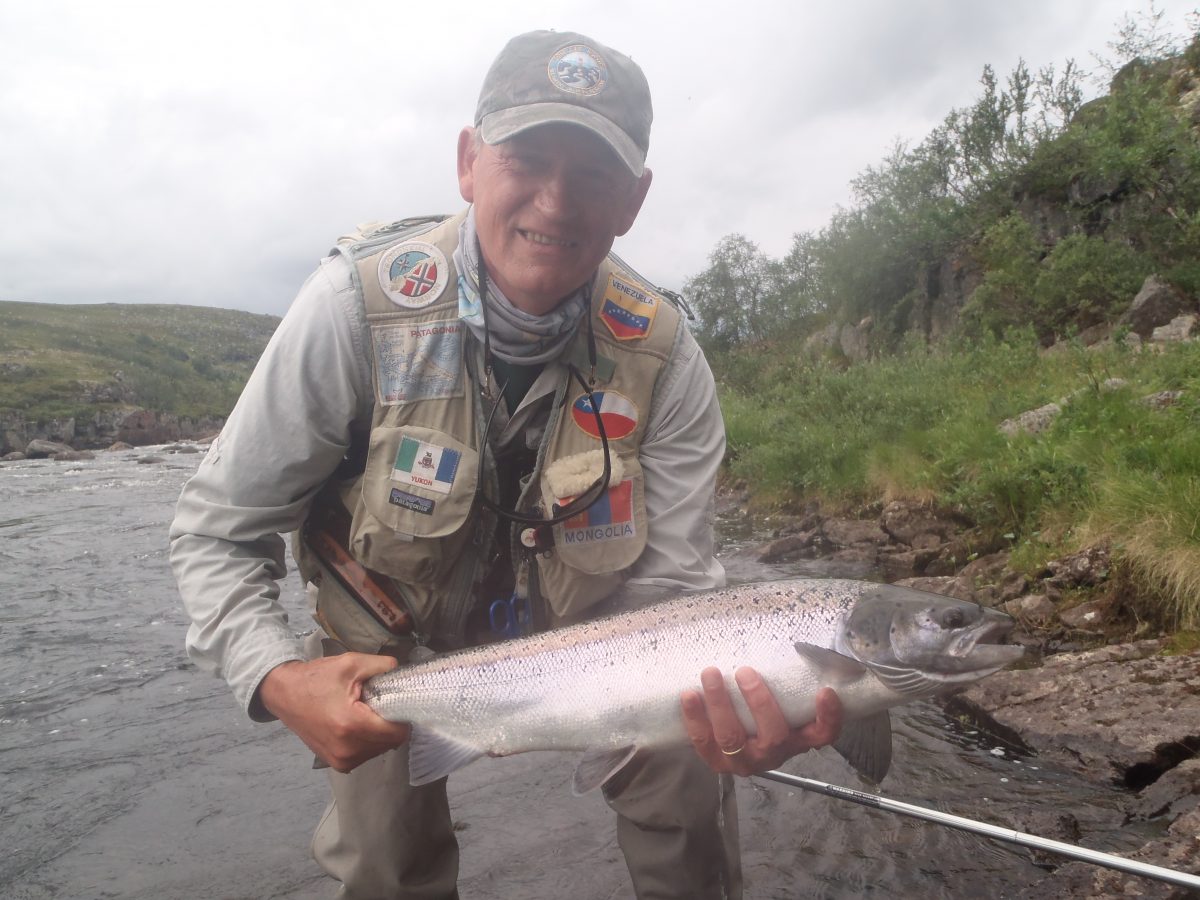You can catch a lot of kind of fish species with a fly rod. Here you will find the principal species of the mentioned areas and in all Alsace. .
in the storck reservoir

In the storkreservoir, the rainbow trouts are the most representative. With their yellow variety, the aguabonitas, the rainbows indeed account for 90% of the salmonidae. The brown trouts , the brook trouts and chars for the remaining 10%. The biggest trouts become bigger than 90 cm.
But many other species of fish can be taken by the fly there: the pikes, numerous and sometimes very large (record with the fly 1,20 m), the perchs and even the pikeperchs (record 83 cm), the carps (record : 80 cm), the tanches (I took one of 47 cm with a wooly-worm), and even some big breams.
in the Rhine
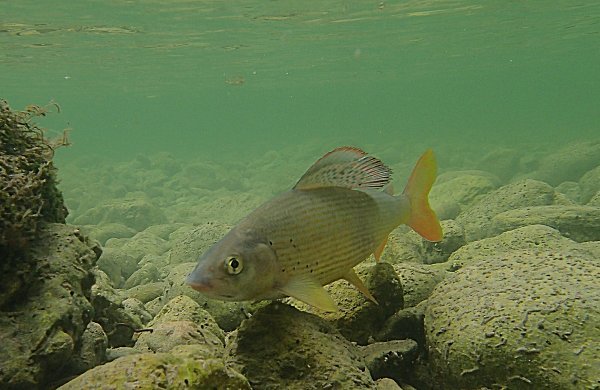
In the Rhine the graylings was a numerous species until 2003, and some specimens came up 50 cm. Splendid combatant, often changing his mood, superb in its silver livery and its coloured dorsal, he is the symbol of the river. But, because of the very hot days from 2003, a lot of them died. So, we have seen their population decline, also because of the predation of cormorants, more and more numerous . A respectfull fisherman would limit himself on one grayling maximum in the year, of more than 40 cm (official minimal size) to help the population coming back. Since 2015 it si forbidden to fish them.
Some nice trouts are sometimes also surprised with the fly. Thus, I had the chance october the first 1998, to catch (and release) one magnificient of 53 cm, taken with a clear nymph.
Especially in the calms, one can touch white fish: chubs, daces, bleaks from who the carnivores are never distant: perchs, pikes and aspes. These are sometimes bigger than 80 cm and are nice sportfish, with streamers. For the next years there is also a hope for flyfisherman to catch an atlantic salmon. These beginn actually to come back for some years (for yet, it is’nt possible to fish them).
in the Bruche
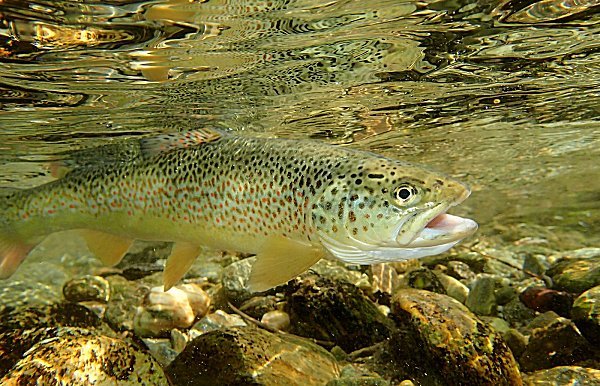
In the highest part of the Bruche , brown trouts are the favourite of the flyfishers. Thi kind of trout is the indigenous fish par excellence in the Bruche, because it reproduces there fo centuries. The fishing departmental federation has made many efforts to keep this alsatian kind of brown trout ! The average size of these trouts is not very significant (legal size to 25 cm, rare fish bigger than 35 cm – my personal record is 45 cm) but their fightness and their promptness will delight you. Rainbow trouts have been introduced there for several years, and some reach respectable sizes.
The grayling is also acclimatized in a large part of the Bruche (from Urmatt to Eckbolsheim), and, since the year 1996 one usually touches some with the fly. If their average size is lower than those of the Rhine, the fish from 30 to 35 cm are rare. But you will really catch more fish lower than the legal size of 32 cm. It is very important to release gently all the graylings because in the last years their population comes dramatically down.
The whitefish are numerous down Heiligenberg, even if some daces are already founded in Wisches. Chubs and spirlin breaks come also on the dry flies. With the streamer you will maybe have the chance to take some perchs and pikes.
Possible catch with the fly are so many in Alsace, and will be in the future can be even more exciting with the return of the salmon. (The youg salmons are part of the banality of catch in the Bruche, where the reintroduction is the most concentrated). There are still many other interesting places for fly fishing in Alsace where you will touch these species: first category rivers, some 2nd category trails, gravel reservoirs (many in the plain of Alsace), or the lakes of Vosges in the Haut-Rhin.
